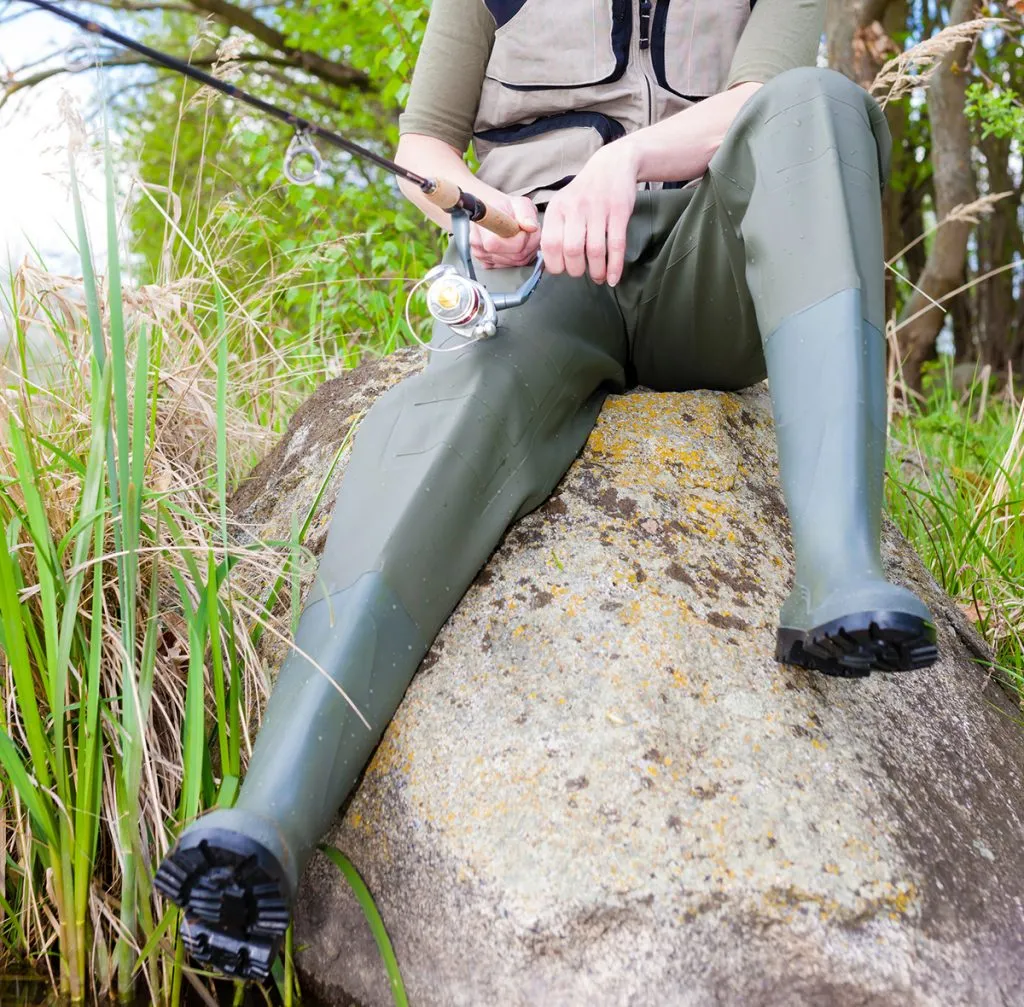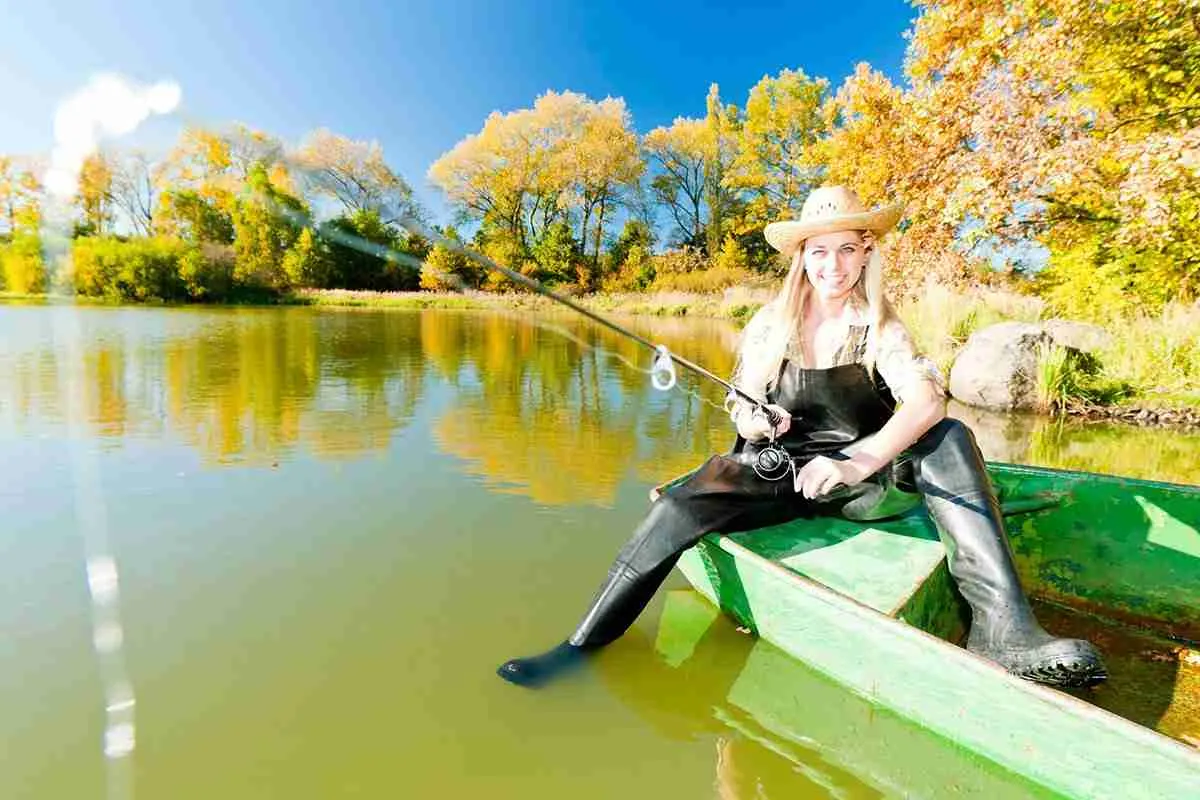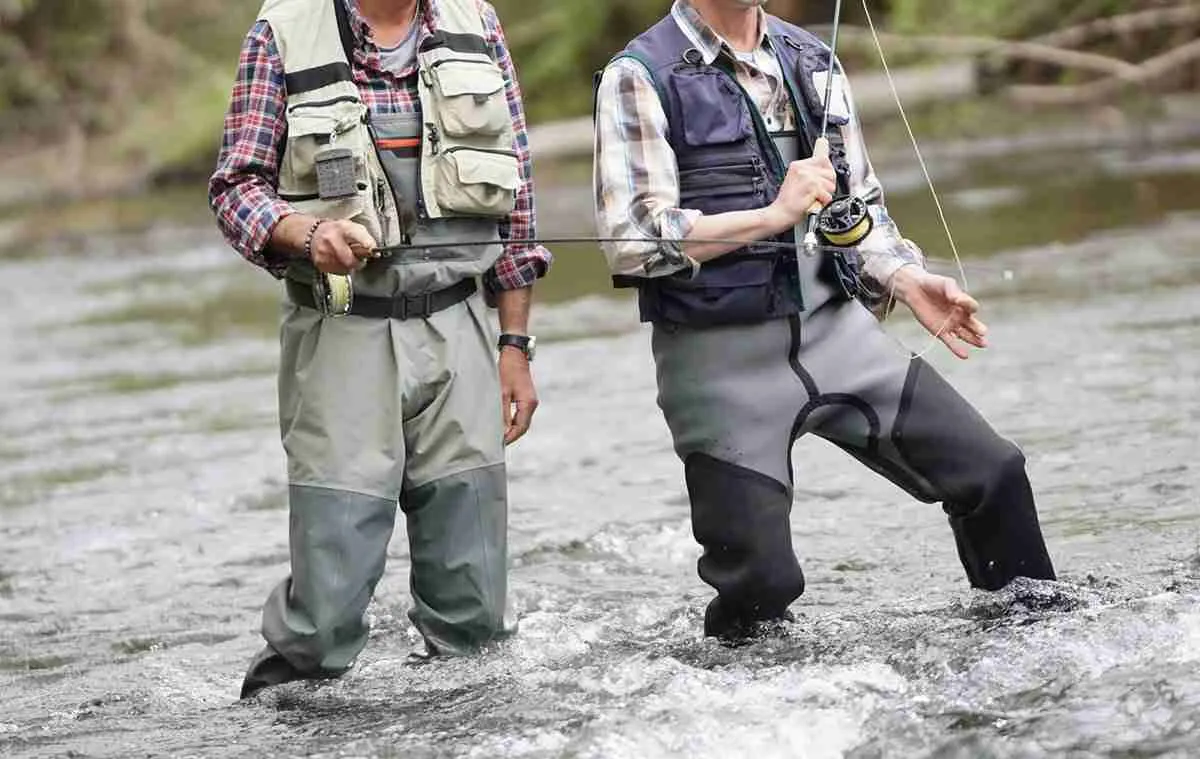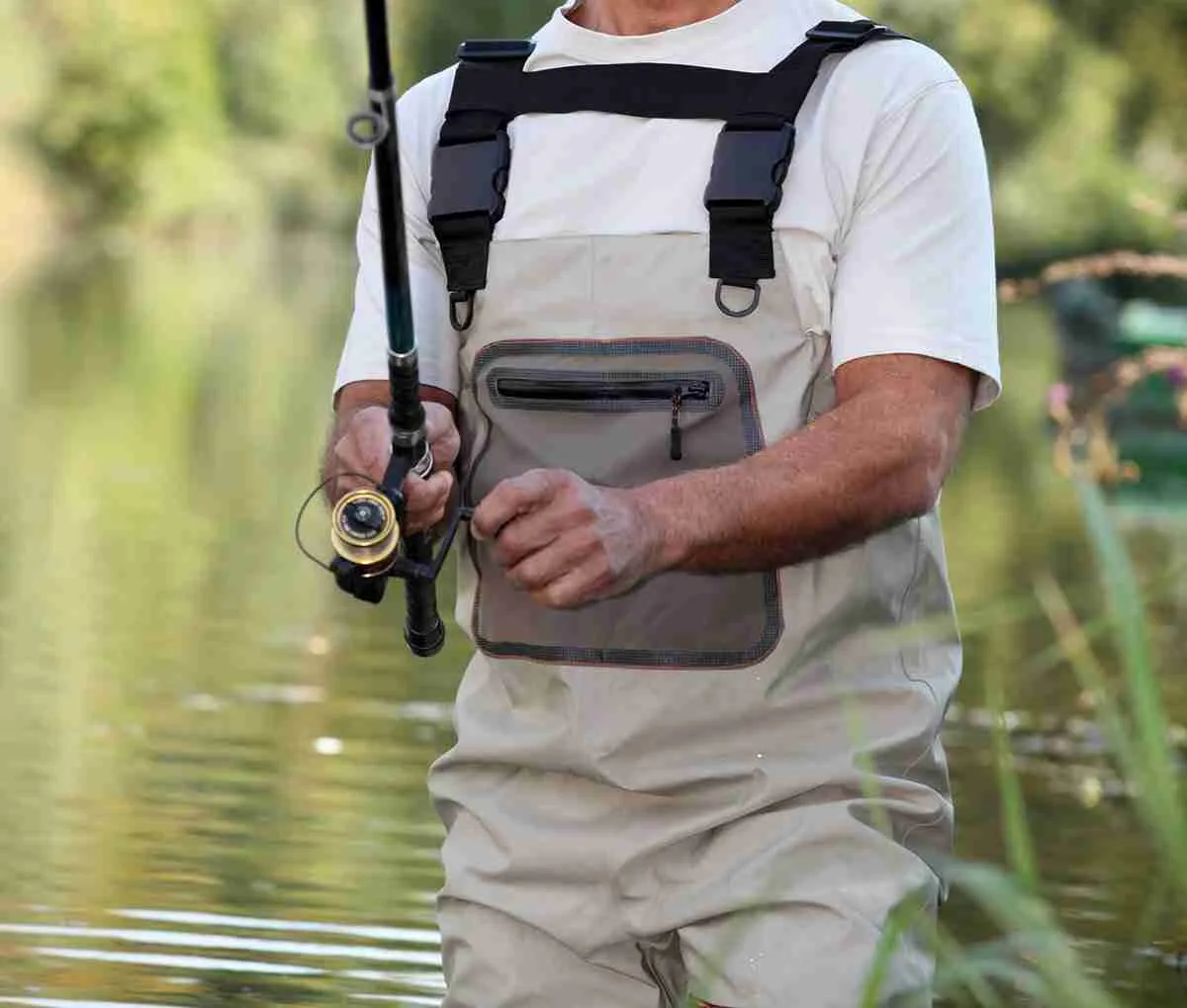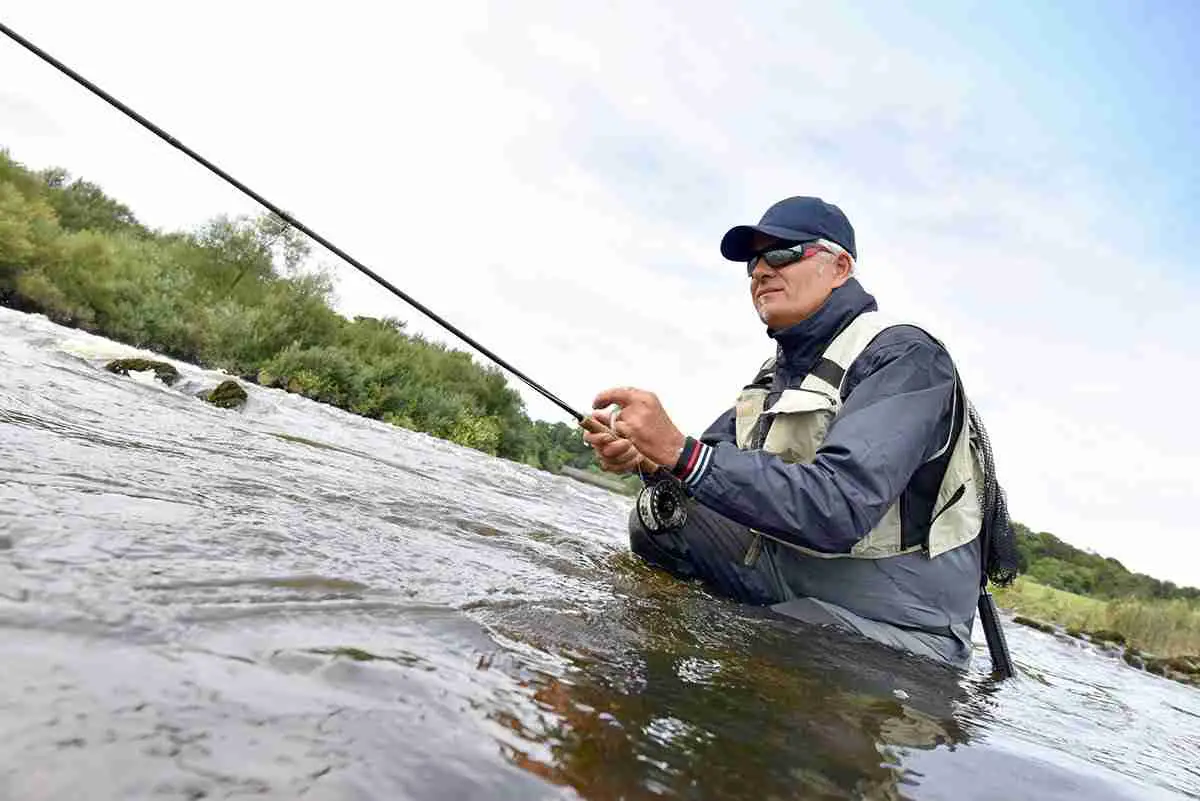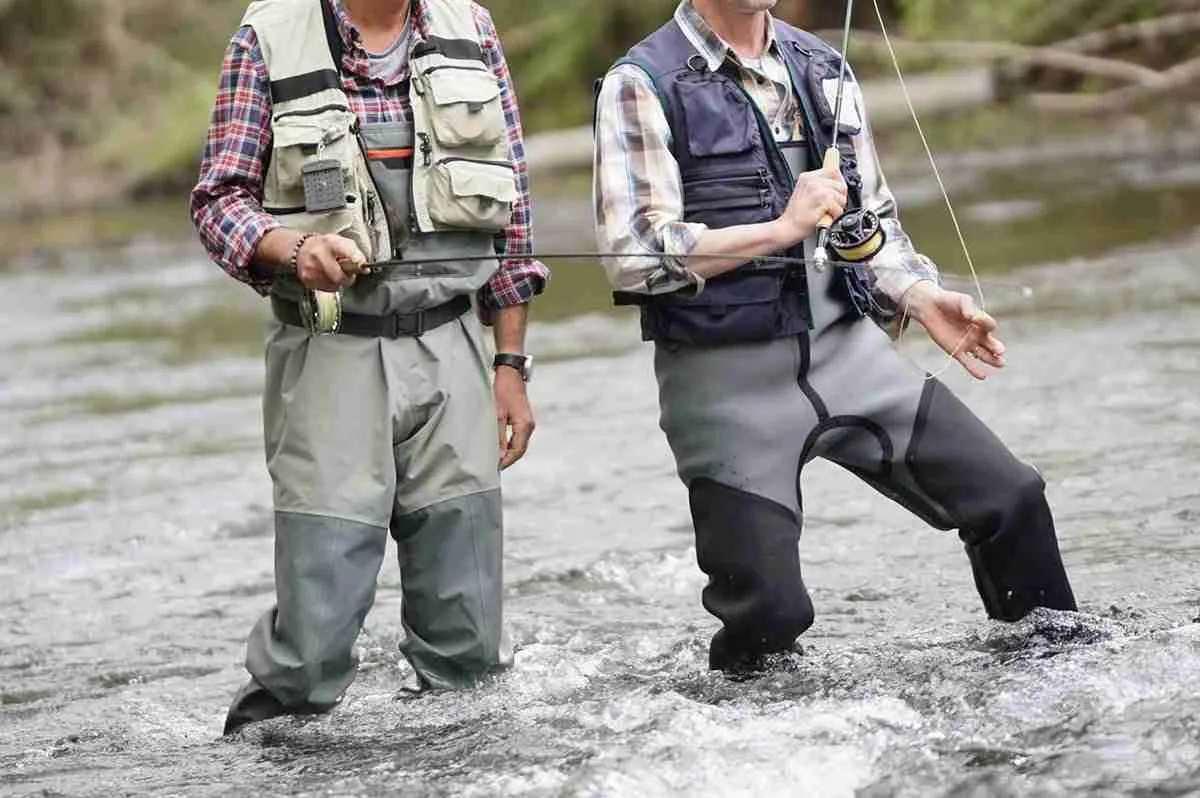Picking the proper footwear to wear with your waders can be a bit tricky, even for the most experienced fishing enthusiasts. Knowing how to choose the right attire can be crucial to the success of your trip, which is why you’ll need to make sure that your footwear provides comfort, warmth, and insulation.
The ideal footwear to wear with waders includes a pair of thick socks, or several, and a pair of wading boots separated by a thin layer of neoprene. Depending on the type of waders you own, you may need to purchase one or more of these components separately.
In this article, I’ll take you through all there is to know about how to choose the ideal attire to pair with your waders for your next fishing trip.
The Ideal Footwear for Each Type of Wader
When choosing the right footwear to pair with your garment, it’s necessary to consider all circumstantial factors and conditions. Terrain, humidity, and temperature levels all play an essential role in your choice of attire.
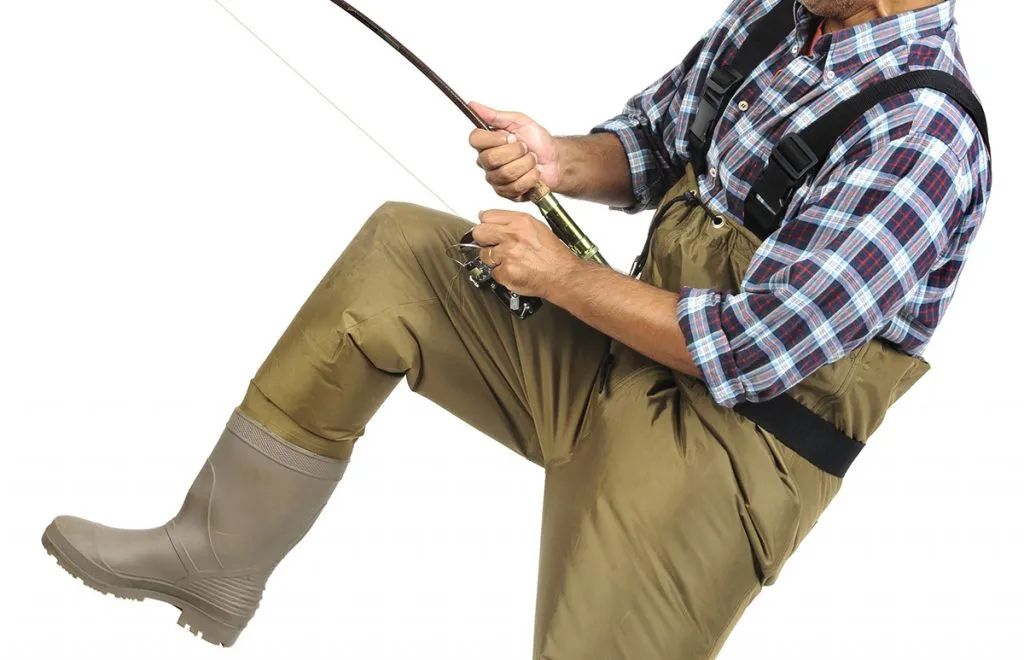
For this reason, your footwear should always be able to provide comfort and warmth, as you’ll need to spend a significant amount of time with your feet in the water. Having said that, environmental elements aren’t the only factors that can influence your choice.
Your choice of footwear will most heavily depend on the type of waders you own.
What Footwear To Wear With Stockingfoot Waders?
Stockingfoot waders get their name due to the fact that the garment comes with neoprene stockings attached to the legs. These stockings are the only covering and protection these waders provide, which means that although they can keep your feet dry and insulated, they don’t offer any substantial support or protection.
You need to wear a pair of thick socks and some high-quality wading boots with your stockingfoot waders. Both of these additional components are necessary to add before setting foot on the water.
While it’s true that these types of waders require a bit of additional investment footwear-wise to become functional, they are usually ideal to use when traveling or during warmer months, as they make for an excellent, lightweight alternative.
Layering a pair of at least ankle-length socks under the neoprene material is highly advisable, as it can prevent the tough material from rubbing against your skin and causing painful blisters.
Furthermore, the added layer will provide additional support and comfort to your feet.
As I previously mentioned, you’ll also need to purchase a separate pair of wading boots to pair with this garment. Luckily, there is no shortage of excellent-quality wading boots in the market today, so finding a great pair at any given price point shouldn’t be too difficult.
Remember to look for a pair that works well in the environment you plan to fish on, as rockier terrains require higher traction soles.
What Footwear To Wear With Bootfoot Waders?
On the other hand, bootfoot waders come with boots already attached to your garment, providing more convenience and warmth compared to their stockingfoot counterparts. Their all-in-one approach also allows for a quicker setup process.
You’ll want to wear two layers of socks under your bootfoot waders. The first layer should be a thick, wool, or wool-like material, followed by a pair of insulating neoprene socks. This footwear setup will allow you to keep your feet warm, dry, and blister-free.
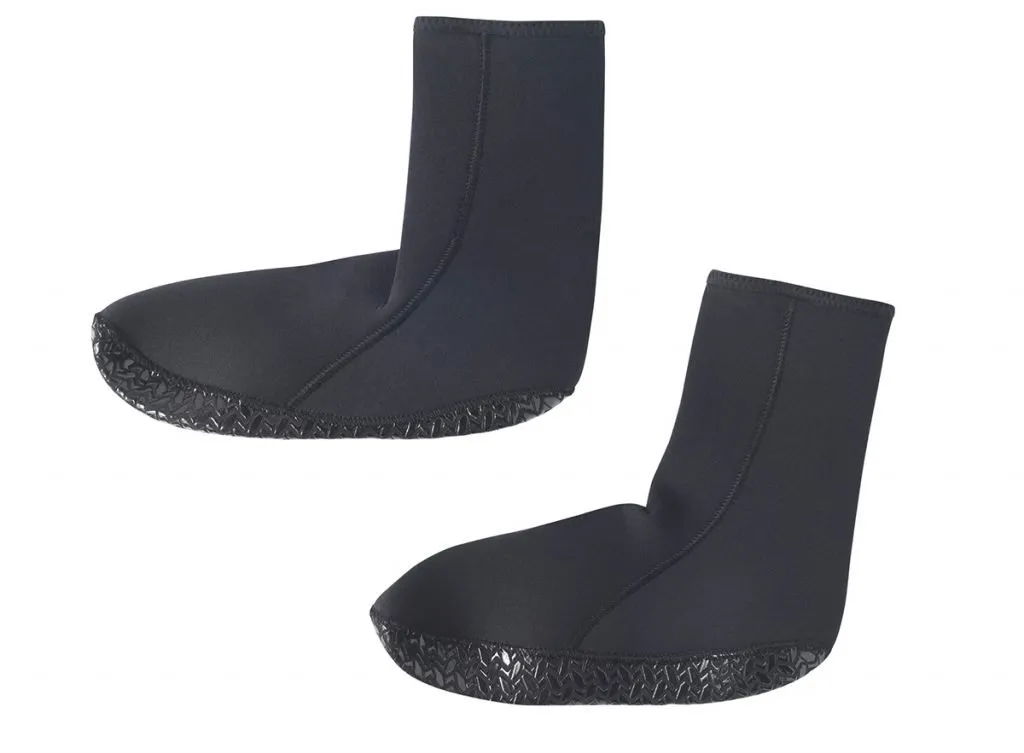
Although they might come at a heftier price point, bootfoot waders are usually the optimal choice for most fishing enthusiasts, as they provide unparalleled convenience and warmth. Both of these factors are crucial when spending hours with your feet submerged in chilly waters.
Having said that, the built-in footwear makes these types of waders bulkier and more difficult to travel with. Therefore, if you frequently find yourself struggling with luggage space, they might not be the best alternative for you.
Additionally, when opting for this garment, you might experience more heat retention compared to stockingfoot alternatives, which can get challenging during hot summer months.
But even with these downsides, those who like to fish often or in more difficult environments often consider bootfoot waders as the generally superior option. Due to the fact that the garment and the footwear are attached, there’s no way for sand or debris to get inside your attire, causing pain and discomfort.
Do You Always Need To Wear Socks Under Waders?
You always need to wear socks under waders, although their thickness can vary depending on personal preference. Wool or polyester socks serve to cushion and protect your foot from harsh rubber or neoprene materials, which can cause dangerous blisters and rashes when rubbed against your skin.
Although depending on the season, you can adjust the thickness of your socks according to your preferences. Opting for thicker materials like wool is ideal for most scenarios, even when fishing in warmer temperatures.
The reason for this is that when keeping your feet constantly submerged in cool running water, it’s highly unlikely that they’ll get overheated even during hot summer months. With that said, some still feel more comfortable using lighter, thinner fabrics.
Whether you prefer wool or a polyester blend as your material of choice doesn’t matter as long as you have a durable protective layer between your skin and the neoprene sock. During colder winter months, when heat retention is of the essence, you can also try layering these materials.
When choosing a pair of socks to wear with waders, an important element to keep in mind is to always steer away from cotton, as it doesn’t work well in high humidity conditions.
For example, wearing a thin, moisture-wicking pair of socks under a thicker pair made of wool can keep you warmer for much longer. Furthermore, sock length also matters when it comes to insulation.
Your socks should always be longer than ankle length for them to provide ultimate warmth and insulation.
Should You Wear Regular Shoes With Waders?
Water insulation might not be a problem when pairing your regular pair of sneakers or hiking boots with stockingfoot waders. But should you wear regular shoes with waders?
You shouldn’t wear regular shoes with waders. Their soles don’t offer adequate support and traction to fish in most terrains, making their use a hazard. They aren’t ideal for most fishing conditions, as they aren’t designed to be worn underwater.
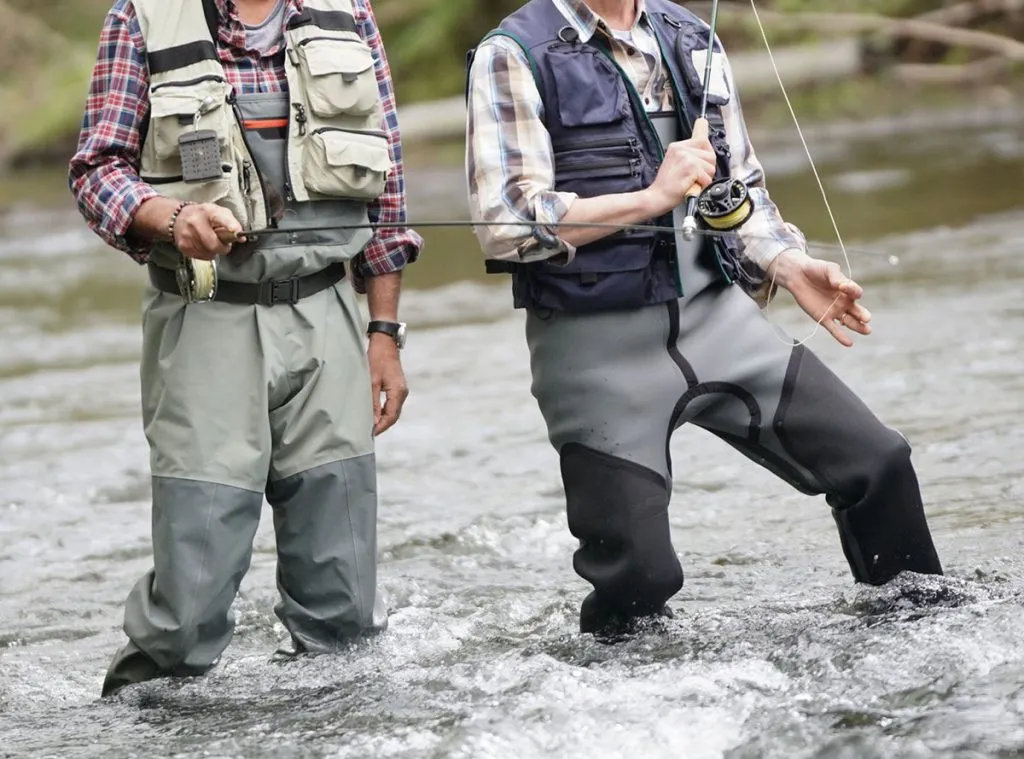
Therefore, although these types of footwear can withstand some humidity, wearing them to fish will quickly damage them while making it harder for you to balance and navigate in slippery, rocky terrains.
Even if you’re considering some more water-friendly options such as water shoes, rubber, or mock boots, they still won’t provide you with the support and grip strength needed to fish for hours on end. For this reason, even though some of these alternatives might be more suitable than the previous, you’re still going to find yourself struggling when wearing them.
Most streams and rivers are slippery and highly unstable, meaning that the proper footwear can make a world of difference. Therefore, if you like to fish frequently, investing in a high-quality pair of wading boots is crucial in ensuring a safe, comfortable, and successful trip.
You can manage to find appropriate footwear for fishing even if you’re on a budget.
As you’ll see in one of the following sections, there are some excellent high-quality options on the market that you can purchase for less than $50.
Alternatively, you can opt to invest in a bootfoot wader in the first place, which means you won’t need to worry about finding an additional pair of wading boots at all. Choosing this approach also offers better insulation, as there will be no space between the footwear and the pants for water or debris to enter through.
Having said that, if you’re in a pinch or are simply planning a one-time trip, some enthusiasts have expressed having used their everyday shoes successfully with their waders. Some have worn their tennis shoes over stockingfoot waders to protect the insulating layer from external damage and have had satisfactory experiences.
However, keep in mind that the evidence supporting the use of regular shoes with waders is anecdotal, and you should take it with a pinch of salt, especially if fishing in unstable terrains.
The Ideal Clothing To Wear Under Waders
Although it may seem like after choosing the ideal footwear, the rest of the attire worn under your waders doesn’t matter much, in reality, the clothing you choose can heavily affect your performance.
When it comes to the materials you choose to layer underneath your waterproof garment, they should be as comfortable, breathable, and environment-appropriate as possible. The right clothing should allow you to move freely while keeping you dry and warm.
Let’s look at the seasonal types of clothing you should wear under your waders.
For Warmer Months
Fishing during late spring and summer requires paying additional attention to your layers if you want to avoid overheating. With that said, when it comes to socks, a synthetic wool blend remains the ideal choice due to its breathability and insulation.
The same concept can be applied to the base layer of the rest of the body.
Choosing some light synthetic clothing would be ideal for providing you with adequate mobility and protection. Again, you’re free to choose from a range of materials depending on your preferences, from nylon to fleece, but I want to reiterate that it’s important to avoid cotton at all costs.
Furthermore, never wear shorts or capris under your waders, no matter how high the temperatures get. As I mentioned in the socks section, the wader’s material isn’t kind to bare skin, which is why you always need to have a separating, full-length layer in between.
For Colder Months
Transitioning your clothing for colder months doesn’t take a lot of effort, as all you’ll need to do is add a few insulating layers. This would be a great time to wear an additional pair of wool socks under the wader’s neoprene while adding more insulating garments over your body as well, ideally made out of fleece.
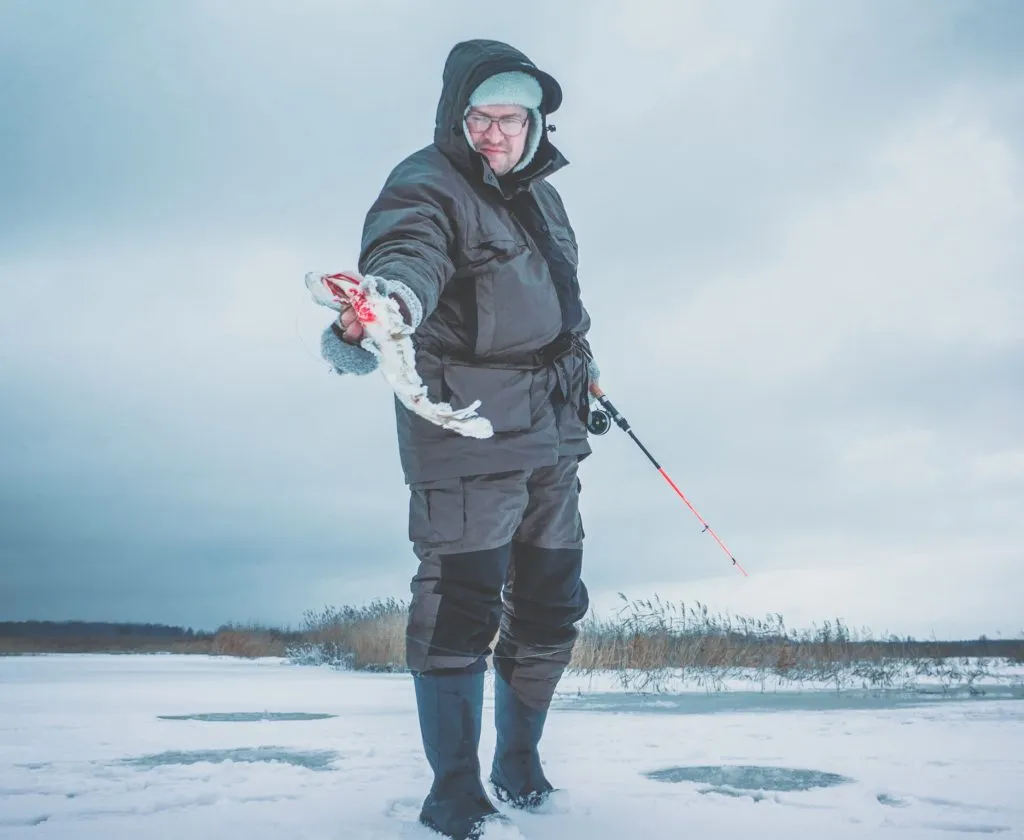
During colder months, you can add a thick winter coat made out of synthetic wools and blends, which could help you better retain your temperature. As always, avoid cotton at all costs, including denim jeans, which can trap moisture and humidity.
Best Wading Boots
If you’re still unsure about how to find the best wading boots for your next fishing trip, take a look at some of the most popular alternatives you can currently find.
Orvis Pro Boa Wading Boots
These well-built, lightweight boots are a favorite among fishing enthusiasts worldwide. Their twist lace system securely holds them onto your foot, giving you excellent grip strength and stability.
The sole is produced using the geometry of Michelin tires, providing industrial-grade strength and traction. The higher contact ratio and even pressure distribution make this pair ideal to use even in the most challenging conditions.
These boots are cut higher than most other options, providing better ankle support. Furthermore, the bottom of the shoe is lined with closed-cell foam, providing unparalleled comfort.
Given their durability, the Orvis Pro Boa boots are surprisingly light and easy to take on and off, making the setup process much less time-consuming.
Overall, these are some of the best options on the market today, albeit a bit pricey.
Frogg Toggs Hellbender
The Frogg Toggs wading boot is an excellent affordable alternative. They offer fantastic support and protection due to their highly durable materials.
Furthermore, their padded ankle collar and lightweight mesh provide comfort and movability, which are crucial during those long fishing trips. These wading boots come with a wide fording ideal for optimizing support and stability.
Therefore, if you’re on a budget, I highly recommend giving these boots a try.
Redington Wading Boots
These shock-absorbing boots are ideal for those planning to fish for hours on end.
The Redington wading boots are designed with an enhanced drainage system that reduces water retention while maintaining breathability. They are as lightweight as they are durable, but these features come at a premium price point.
With that said, this pair justifies its price through the abrasion resistance, durability, and stability it offers.
Therefore, for those going on long or challenging trips, you might want to look into investing in some Redington wading boots, as it’s highly unlikely you’ll find another pair that offers the same longevity and comfort.
Conclusion
Finding the best footwear to wear with waders can be much easier than you’d think. As long as you’re wearing the three necessary layers of wool, neoprene, and some type of wading boot, you’ll be able to take on even the most challenging fishing adventures.
What To Read Next:
